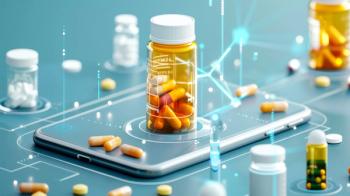
Where Are the New Antibiotics?
With the threat of superbugs and the possibility of an antibiotic-less future, alternatives are needed now.
Antibiotic use is more scrutinized than ever, with the goal of reducing poor prescribing practices and using antibiotics in a targeted manner. But what is actually being done to combat the superbugs we face right now?
This week, the World Health Organization (
"What we need to do is stop paying for antibiotics based on how many times they are prescribed, to discourage use. We don't want colistin [polymyxin E] used very frequently. In fact we don't want it used at all," Suzanne Hill, WHO's Director of Essential Medicines and Health Products, told
So what does the future of antibiotics look like? To answer that, the PEW Charitable Trusts took a comprehensive look at the antibiotics pipeline to find out what drugs are being developed and is still missing from the antibiotic repertoire.
Currently, according to
Less than a third of drugs in the pipeline are part of a novel drug class or have a novel mechanism of action, meaning that more needs to be done to address the threat of superbugs. PEW looked not only at conventional antibiotics in the pipeline, but also at what they call “
Up next: How nontraditional products could save antibiotics
These drugs are not intended to replace antibiotics, said Shore, but will work alongside them. “Traditional antibiotics will still be critical,” she said, but there are many new therapies designed to improve their efficacy or act prophylactically. Of these types of drugs, seven are in phase 1, 21 in phase 2, three in phase 3, and one,
These nontraditional drugs take many forms, from vaccines to probiotics to virulence inhibitors, which prevent or neutralize harmful effects such as toxins from a bacterium. These drugs act systemically, but do not act locally.
These treatment methods are largely untested, so it is unclear what the effect on patient care will be. However, Shore did call these products “promising,” since at least they represent innovation. Shore mentioned that innovation is critical because “we haven’t seen a lot of new antibiotics recently.” It has been about 30 years since the last antibiotic product has gone from discovery to patient.
Shore said that this is because of the sheer difficulty in finding molecules that will get into difficult-to-treat bacteria. Additionally, she said, there is not enough communication within the antibiotic community. One solution to finding new treatments, she said, would be a mechanism to increase communication in the research and development communities.
Two recent laws, Generating Antibiotic Incentives Now (GAIN) and 21st Century Cures Act, aim to make developing antibiotics easier and more attractive to manufacturers. GAIN extended the patent period on new drugs by 5 years, incentivizing pharmaceutical companies to research new drugs, and the 21st Century Cures Act created a new method of antibiotic approvals designed to speed up the process.
While these acts are important, and while what is in the pipeline may help, the goal, says Shore, is that “we must continue to spur innovation.”
Newsletter
Pharmacy practice is always changing. Stay ahead of the curve with the Drug Topics newsletter and get the latest drug information, industry trends, and patient care tips.






































































































































